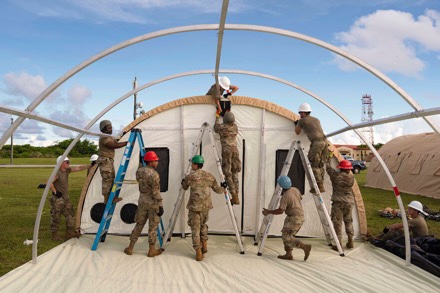
ARLINGTON, Va. (AFNS) —
The Air Force announced plans to transition foundational training for all Airmen beginning Oct. 1 ensuring they have the necessary skillsets to survive and operate during contingencies both at home station and deployed, including remote and contested environments.
Ready Airman Training will prepare Airmen to develop and demonstrate the mindset required to support the Air Force Force Generation, or AFFORGEN, deployment model.
“The vision for how Airmen train and deploy embraces an emerging culture of support maintaining and building readiness across the AFFORGEN phases,” said Air Force Chief of Staff Gen. CQ Brown, Jr. “We must challenge the status quo to prepare our Airmen for operating in environments far more complex than we have in the past.”
Aligned with the Oct. 1 implementation of AFFORGEN, Airmen will begin receiving tailored training spread throughout the 18-month Reset, Prepare and Ready phases of the AFFORGEN cycle. Unit commanders may adjust the number of training events required based on an Airman’s level of preparedness and the deployment phase they are entering.
Previous deployment training, which at a minimum consisted of Basic Airman Readiness and Basic Deployment Readiness, was accomplished as just-in-time training, once notified of a deployment, and consisted of approximately 30 hours of training.
In March, a team of 70 experts gathered in San Antonio for a Ready Airman Training Design Sprint where they identified 12 focus areas, designated as Ready Training Areas, with specific desired learning objectives necessary for Airmen to deploy faster while simultaneously increasing overall expertise.
Ready Training Areas include: Law of War; Survival, Evasion, Resistance and Escape; Small Arms; Integrated Defense; Active Threat Response; Chemical, Biological, Radiological and Nuclear Training; Explosive Ordnance Hazard; Tactical Combat Casualty Care All Service Members Course; Comprehensive Airman Fitness; Cross Cultural Communications; Information Environment Awareness; and Basic Communications.
The Ready Training Area associated training events will be spread over the entire AFFORGEN cycle incrementally over the next two years. The total estimated training hours required over the course of the two-year cycle – four years for Guard and Reserve – depend on whether the Airman is considered inexperienced (40 hours), experienced (24 hours) or staff (15 hours).
“Ready Airman Training serves as the continuum of combat learning for all Airmen while being adaptable to each individual Airman’s experience level and allowing commanders the flexibility to tailor training for specific operating environments,” said Maj. Gen. Albert Miller, Air Force Training and Readiness director.
Cross-functional training requirements and training packages for commanders were developed using validation methods that will present an Airman prepared to execute missions based on emerging operational timelines. Additionally, Ready Airman Training increases flexibility for commanders at all levels to tailor training requirements to their Airmen.
“This is the model and method needed to compete and deter where the adversary’s tactics and techniques have evolved in an effort to match ours,” said Chief Master Sgt. of the Air Force JoAnne S. Bass. “Ready Airman Training is how we, as an Air Force, continue to outpace our strategic competitors and win the high-end fight.”
Specific training objectives for Ready Training Areas are available on the AEF Online and AFFORGEN Connect websites. Major commands are responsible for tracking and reporting readiness annually through myLearning.
Secretary of the Air Force Public Affairs

